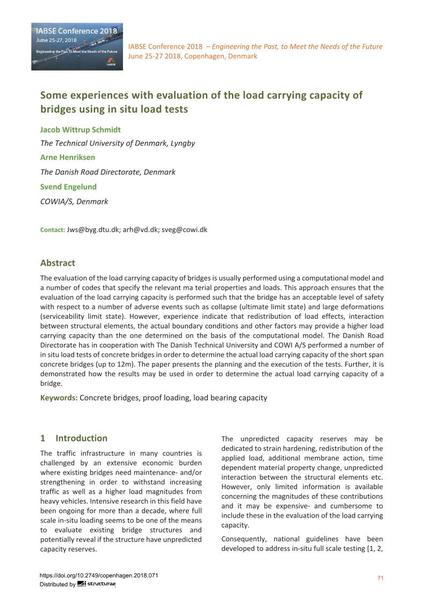| Medium: |
Tagungsbeitrag |
| Sprache(n): |
Englisch
|
| Tagung: |
IABSE Conference: Engineering the Past, to Meet the Needs of the Future, Copenhagen, Denmark, 25-27 June 2018 |
| Veröffentlicht in: |
IABSE Conference Copenhagen 2018 |
|
Seite(n):
|
71-78
|
Anzahl der Seiten (im PDF): |
8 |
|
|
Seite(n):
|
71-78
|
| Anzahl der Seiten (im PDF): |
8 |
| DOI: |
10.2749/copenhagen.2018.071 |
|
Abstrakt:
|
The evaluation of the load carrying capacity of bridges is usually performed using a computational model and a number of codes that specify the relevant ma terial properties and loads. This approach ensures that the evaluation of the load carrying capacity is performed such that the bridge has an acceptable level of safety with respect to a number of adverse events such as collapse (ultimate limit state) and large deformations (serviceability limit state). However, experience indicate that redistribution of load effects, interaction between structural elements, the actual boundary conditions and other factors may provide a higher load carrying capacity than the one determined on the basis of the computational model. The Danish Road Directorate has in cooperation with The Danish Technical University and COWI A/S performed a number of in situ load tests of concrete bridges in order to determine the actual load carrying capacity of the short span concrete bridges (up to 12m). The paper presents the planning and the execution of the tests. Further, it is demonstrated how the results may be used in order to determine the actual load carrying capacity of a bridge.
|
|
Stichwörter:
|
Betonbrücke
|

